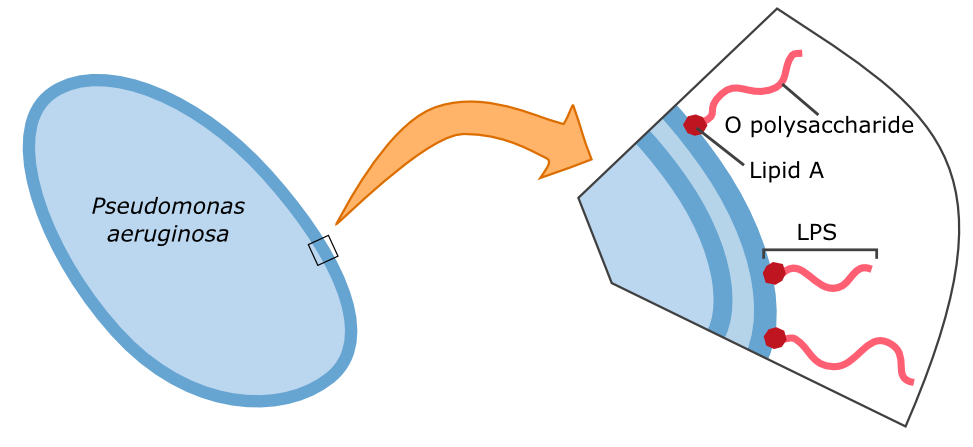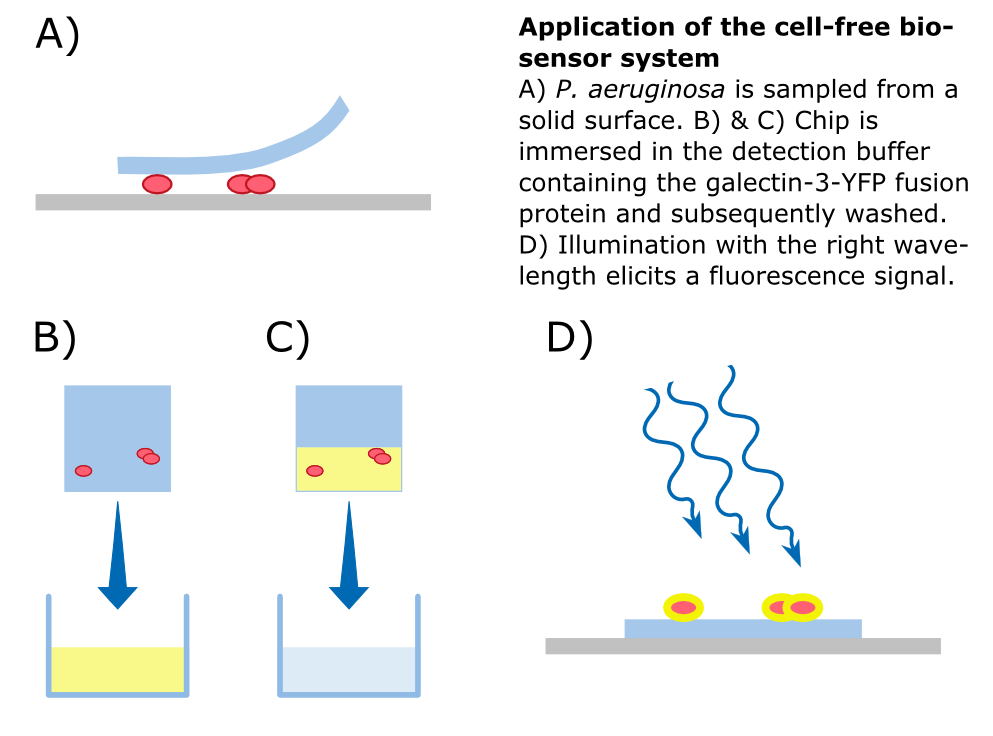Team:Aachen/Project/Gal3
From 2014.igem.org
| Line 3: | Line 3: | ||
= Idea = | = Idea = | ||
| + | |||
| + | {{Team:Aachen/Figure|Aachen_14-10-09_Pseudomonas_LPS_iNB.png|title=Cell wall composition of ''Pseudomonas aeruginosa''|subtitle=Gram-negative bacteria, such as ''P. aeruginosa'' have two cell membranes. The LPS are embedded in the outer membrane and are composed of a lipid and an O polysaccharide. The O polysaccharide can be recognized by galectin-3.|width=400px}} | ||
We are committed to constantly improve our detection methods. Therefore, we already thought ahead and came up with an alternative approach for the detection of pathogens. The current method uses the quorum sensing system pathogens and is thus limited to bacteria that secrete autoinducers. Our alternative detection system involves biomolecules tagged with a reporter that bind to the surface of the cell and reveal its presence. | We are committed to constantly improve our detection methods. Therefore, we already thought ahead and came up with an alternative approach for the detection of pathogens. The current method uses the quorum sensing system pathogens and is thus limited to bacteria that secrete autoinducers. Our alternative detection system involves biomolecules tagged with a reporter that bind to the surface of the cell and reveal its presence. | ||
The specific binding of galectin-3 enables the construction of such a detection system. Parts of the '''lipopolysaccharide structure (LPS)''' of ''Pseudomonas aeruginosa'' can be bound by galectin-3. A fusion protein of galectin-3 and a reporter protein, such as a fluorescent protein, can be built and applied in the detection of ''Pseudomonas aeruginosa''. | The specific binding of galectin-3 enables the construction of such a detection system. Parts of the '''lipopolysaccharide structure (LPS)''' of ''Pseudomonas aeruginosa'' can be bound by galectin-3. A fusion protein of galectin-3 and a reporter protein, such as a fluorescent protein, can be built and applied in the detection of ''Pseudomonas aeruginosa''. | ||
| - | |||
| - | |||
| - | |||
| - | |||
In our approach, a '''galectin-3-YFP fusion protein''' is built and expressed in ''E. coli''. A his-tag and a snap-tag for purification are included. The fusion protein can then be incorporated into a '''cell-free biosensor system'''. Such biosensors have many advantages over systems that use living cells; storage, for example, is much easier. From a [https://2014.igem.org/Team:Aachen/Safety biosafety] and social acceptance perspective, it is also advantageous if the sensor system does not contain live genetically modified organisms. | In our approach, a '''galectin-3-YFP fusion protein''' is built and expressed in ''E. coli''. A his-tag and a snap-tag for purification are included. The fusion protein can then be incorporated into a '''cell-free biosensor system'''. Such biosensors have many advantages over systems that use living cells; storage, for example, is much easier. From a [https://2014.igem.org/Team:Aachen/Safety biosafety] and social acceptance perspective, it is also advantageous if the sensor system does not contain live genetically modified organisms. | ||
Revision as of 19:05, 9 October 2014
|
|
|
|
 "
"

